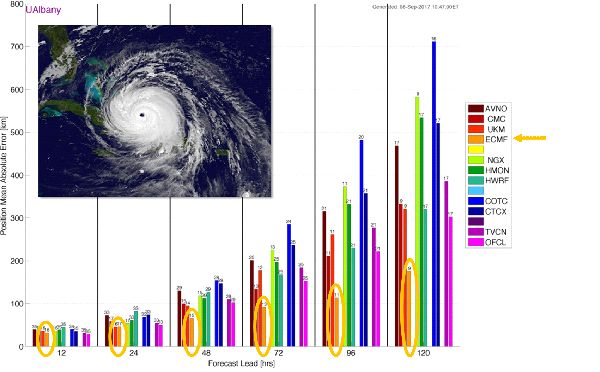At the 2015 Paris Climate Conference, leaders from 194 countries of the world unanimously acknowledged the serious threat posed by anthropogenic emissions of greenhouse gases. Society must now become resilient to changes in climate over coming decades. Most importantly, this will require quantitative estimates of the changing character of climate extremes. Such extremes include not only exceptional weather events such as violent wind storms and flash floods, but also persistent anomalies in planetary–scale circulation patterns, which lead to pervasive flooding in some regions and seasons, and long-lived drought and extremes of heat in others. However, providing such information at present goes beyond the capability of even the most advanced weather prediction and climate simulation models and will require a step change in the quality of global weather and climate prediction. In particular, the resolution of these models must increase to a level which allows both ocean eddies and individual cloud systems to become represented explicitly (Bony et al. 2015, Schneider et al. 2017). This is the most promising approach for obviating long-standing model biases.
The recent episode of extreme tropical cyclone events affecting the Caribbean and the US clearly demonstrates the need for accurate and reliable prediction capability. Hurricane Harvey alone is estimated to have caused 180 billion US Dollar damage, and hurricane Irma is considered the largest and most powerful hurricane occurring in the recorded history of the Atlantic basin.

The Figure above shows the mean absolute track error forecasts for Irma from various centres around the world. Accurate track errors are crucial for guiding evacuation plans and risk management. The ECMWF forecasts have been by far the most accurate (orange bars and circles) not only for Irma. However, errors still amount to several hundreds of kilometres for forecasts beyond a few days, and only substantial improvements to key model drivers like spatial resolution and complexity will eventually help to achieve sufficient skill.
Only by advancing Earth system modelling and harnessing exascale technologies to substantially accelerate weather and climate prediction models this scientific challenge can be met. This clearly poses an exascale computing challenge to our community (Bauer et al. 2015).
The recognition of this fact explains why weather and climate prediction has produced outstanding momentum for the development of new mathematical methods and numerical algorithms towards exascale computing and extreme data handling in recent years. Leadership in the ESCAPE project and ESiWACE centre of excellence as well as partnership in projects like CRESTA, NextGenIO and the recently started EuroEXA co-design effort are proof that weather and climate prediction drive key areas of development for the high-performance computing community already now, and why it represents a must-have application for next-generation hardware configurations introduced by extreme-scale demonstrators eventually leading to European exascale platforms in the future.
ESCAPE-2 paves the way for the European weather and climate prediction community and beyond towards the exascale. This will be achieved by “connecting the dots”: Developing bespoke and novel mathematical and algorithmic concepts, combining them with proven methods, and thereby reassessing the mathematical foundations forming the basis of Earth system models. Moreover, ESCAPE-2 invests in significantly more productive programming models for the weather-climate community through which novel algorithm development will be accelerated and future-proofed. Eventually, the project aims at providing exascale-ready production benchmarks to be operated on extreme-scale demonstrators and beyond. Moreover, ESCAPE-2 combines cross-disciplinary uncertainty quantification tools (URANIE) for high-performance computing, originating from the energy sector, with ensemble based weather and climate models to quantify the effect of model and data related uncertainties on forecasting – a capability, which weather and climate prediction has pioneered since the 1960s.
